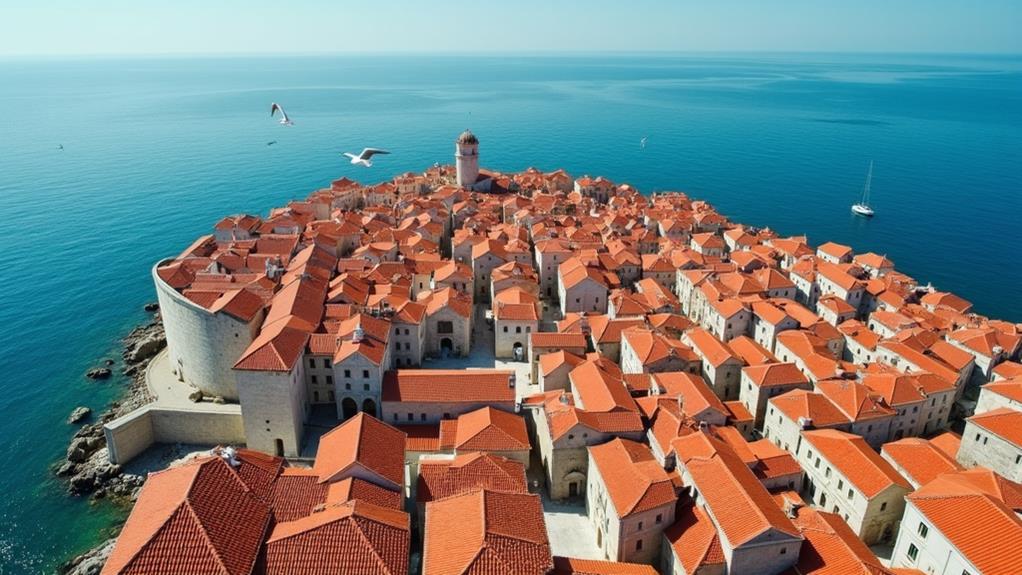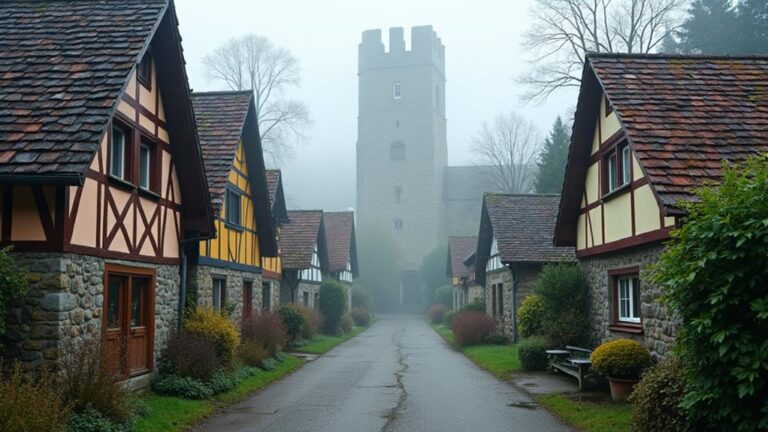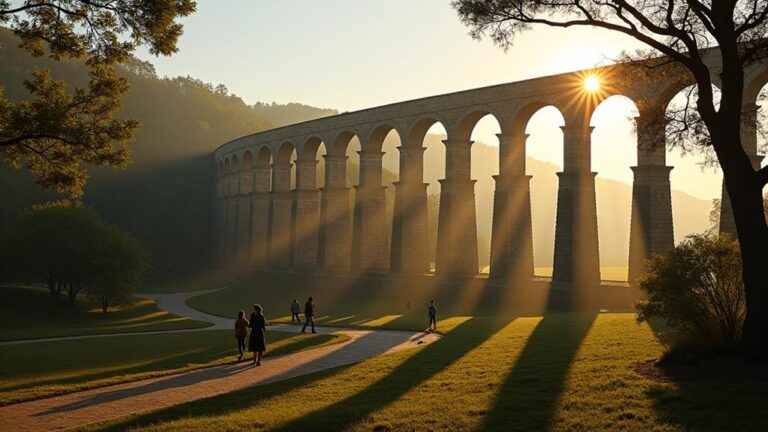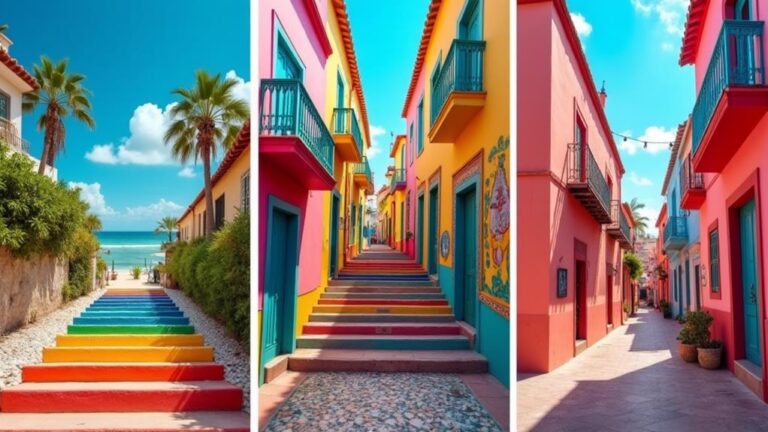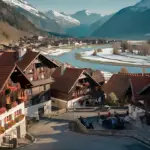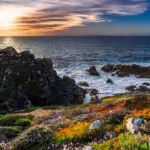You're planning a trip to Croatia, and you're looking for a comprehensive guide to help you make the most of your time. You've come to the right place. With its stunning coastline, ancient cities, and breathtaking national parks, Croatia has something for everyone. To create an unforgettable experience, it's essential to have a well-planned itinerary. Here, we'll break down the top 10 must-visit destinations in Croatia, from the medieval walls of Dubrovnik to the picturesque beaches of Hvar Island. But before we start, you're probably wondering: what are the must-see attractions and hidden gems that you shouldn't miss?
Contents
Key Takeaways
- Start in Zagreb City, exploring its medieval charm, historic landmarks, and local markets.
- Visit Plitville Lakes National Park, a UNESCO World Heritage Site with 16 turquoise lakes and waterfalls.
- Explore the historic city of Split, including Diocletian's Palace, and enjoy the nearby islands and beaches.
- Discover the medieval charm of Hvar Town, with its historic sites, picturesque landscape, and stunning beaches.
- End in Dubrovnik, walking along the ancient walls and exploring the historic Old City, a UNESCO World Heritage Site.
Explore Dubrovnik Old City
You're in for a treat as you step into the ancient walls of Dubrovnik's Old City, a UNESCO World Heritage Site that's steeped in history and bursting with charm.
As you walk along the narrow cobblestone streets, you'll be struck by the impressive Dubrovnik architecture, a blend of Gothic, Renaissance, and Baroque styles that reflect the city's rich cultural heritage.
Take a moment to admire the imposing city walls and fortifications, which date back to the 14th century.
You can even walk along the ancient walls, taking in the stunning views of the Adriatic Sea and the surrounding islands.
Dubrovnik's Old City is also a treasure trove for fans of Game of Thrones, with many locations featured in the hit series, including the iconic Fort Lovrijenac, which served as Stokeworth in the show.
As you explore the city, be sure to visit the Rector's Palace, the Franciscan Monastery, and the stunning Dubrovnik Cathedral.
Each of these landmarks offers a glimpse into the city's fascinating history and architecture.
With its unique blend of medieval charm and modern attractions, Dubrovnik's Old City is a must-visit destination on your Croatian itinerary.
Visiting Hvar Island
As you set foot on Hvar Island, you're in for a treat – stunning landscapes, rich history, and some of the most beautiful beaches in the Adriatic await your discovery.
Your Croatian adventure will take a dramatic turn as you explore the picturesque Hvar Town, steeped in history and architecture that spans centuries.
From sun-kissed beaches to the island's historic core, you'll soon uncover the many highlights that make Hvar a must-visit destination.
Hvar Island Highlights
Hvar Island's picturesque landscape unfolds like a canvas of emerald forests, golden beaches, and medieval architecture.
As you stroll through Hvar Town, you'll discover a treasure trove of historic sites, including the 16th-century Fortress Fortica and the elegant St. Stephen's Square.
The town's narrow streets are lined with charming shops, galleries, and restaurants serving up fresh seafood and local specialties.
Be sure to try some of the island's renowned lavender products and wines at one of the many Hvar restaurants.
After dark, Hvar nightlife comes alive with a vibrant mix of bars, clubs, and live music venues.
You can dance the night away at a beachside club or enjoy a more laid-back evening at a taverna, sipping a cocktail and watching the stars.
Whatever your style, Hvar Island has something for everyone.
As you explore the island, you'll find plenty of opportunities to get off the beaten path and discover hidden gems, from secluded coves to ancient villages.
With its unique blend of natural beauty, rich history, and lively atmosphere, Hvar Island is the perfect destination for any traveler.
Beautiful Beaches to Visit
The island of Hvar boasts an incredible array of beaches, each with its own unique charm and character. As you explore the island, you'll find secluded coves, pebbly shores, and sandy bays, all surrounded by crystal-clear waters and breathtaking coastal scenery.
| Beach | Features |
|---|---|
| Palmižana Beach | A picturesque beach surrounded by pine trees and a beautiful botanical garden |
| Mlini Beach | A secluded cove with a pebbly shore and crystal-clear waters, perfect for snorkeling |
| Zavala Beach | A long sandy beach with a lively atmosphere, ideal for families and water sports |
When visiting Hvar Island, you'll have plenty of opportunities to unwind and enjoy some seaside relaxation. The island's beaches offer a range of activities, from swimming and snorkeling to sunbathing and beach volleyball. As you soak up the sun and enjoy the tranquil atmosphere, you'll feel your worries melting away. With its stunning beaches and crystal-clear waters, Hvar Island is the perfect destination for those seeking a relaxing and adventurous getaway.
Explore Hvar Town History
Explore Hvar Town History
Step back in time and immerse yourself in the rich history of Hvar Town, a captivating destination that seamlessly blends ancient architecture with modern charm.
As you wander through the narrow streets, you'll discover a treasure trove of Hvar town legends and historical landmarks that showcase the town's strategic importance in the past.
The Hvar town architecture is a testament to the town's rich history, with a mix of ancient Greek, Roman, and Venetian influences.
Some of the notable architectural features include:
- Fortica Fortress, a 16th-century fortress that offers stunning views of the town and the surrounding islands
- Hvar Cathedral, a beautiful Baroque church that dates back to the 16th century
- Loggia, a 16th-century palace that now houses the Hvar Town Museum
- Rector's Palace, a stunning example of Venetian architecture that now houses the Hvar Heritage Museum
- Arsenal, a 16th-century building that once served as the town's naval base
As you explore Hvar Town, you'll uncover a wealth of history and culture that will leave you in awe.
From its stunning architecture to its fascinating legends, Hvar Town is a destination that will captivate your senses and leave you wanting more.
Discover Split's Diocletian Palace
Step into the heart of Split, where ancient history and modern charm converge within the imposing walls of Diocletian Palace.
As you explore this magnificent structure, you'll discover a blend of Roman, Gothic, and Renaissance architectural styles that reflect the palace's complex history.
The Palace architecture is a testament to the ingenuity of its builders, who constructed it in just 10 years as a retirement home for Emperor Diocletian in the 4th century.
As you wander through the palace's labyrinthine streets, you'll catch glimpses of Diocletian's biography in the intricate details and imposing structures that remain.
The emperor, known for his brutal persecution of Christians, built the palace as a fortress, complete with thick walls, towers, and a private villa.
Today, the palace is a thriving hub of activity, with shops, restaurants, and cafes spilling out onto the streets.
You can almost hear the echoes of history as you walk through the palace's narrow alleys and grand squares, imagining the lives of the emperors, nobles, and merchants who once called this place home.
Plitvice Lakes National Park
As you plan your visit to Plitvice Lakes National Park, you'll want to know the park's opening hours, which vary depending on the time of year.
Summer hours are from 8 am to 8 pm, while winter hours are from 8 am to 4 pm.
You'll also need to be aware of the park's rules and regulations regarding swimming, which is only allowed in designated areas.
Before you start exploring the stunning turquoise lakes and waterfalls, take a moment to familiarize yourself with the park's safety guidelines to ensure a fun and safe experience.
Park Opening Hours
When planning your visit to Plitvice Lakes National Park, you'll want to factor in the park's opening hours to make the most of your time.
The park is open year-round, but the hours vary depending on the season. During peak season (April to October), the park is open from 8 am to 8 pm, while during the off-season (November to March), the hours are 8 am to 4 pm.
It's also important to note that the park has implemented crowd management measures to ensure a smooth and enjoyable experience for all visitors.
This includes limiting the number of visitors at any given time and enforcing park rules.
Some key rules and regulations to keep in mind when visiting Plitvice Lakes National Park include:
- Stay on designated trails and paths to avoid damaging the park's fragile ecosystem.
- Don't litter or throw trash on the ground.
- Refrain from feeding the park's wildlife.
- Keep a safe distance from the waterfalls and lakes to avoid accidents.
- Follow the instructions of park staff and rangers at all times.
Swimming and Safety
Swimming is not allowed in Plitvice Lakes National Park, so it's essential to respect this rule for your safety and the park's preservation. Safety is a top priority at Plitvice Lakes National Park, particularly when it comes to exploring its stunning water features. As you wander through the park, you'll find designated viewing areas and boardwalks to help you stay safe while taking in the breathtaking views.
When visiting other nearby beaches and lakes, it's crucial to follow Water Safety and Beach Etiquette guidelines:
| Beach Etiquette | Water Safety | Additional Tips |
|---|---|---|
| Respect other beachgoers | Swim in designated areas | Follow local rules and signs |
| Keep the beach clean | Watch for strong currents | Swim with a buddy |
| Be mindful of your belongings | Avoid swimming during storms | Learn basic water rescue techniques |
Zagreb City Tour
Freedom unfolds in the vibrant capital of Croatia as you step into Zagreb's city tour.
You'll discover a city that seamlessly blends medieval charm with modern flair.
As you wander through the cobblestone streets, you'll stumble upon historic landmarks, cultural attractions, and a thriving food scene.
Explore the city's local markets, like Dolac Market or Britanski Trg, to sample authentic Croatian cuisine and drinks.
Be sure to try some traditional dishes like peka, paprika, or burek.
Don't forget to wash it down with a shot of rakia or a cold beer.
Some must-visit spots in Zagreb include:
- Ban Jelačić Square, the heart of the city
- Zagreb Cathedral, a stunning Gothic landmark
- Museum of Broken Relationships, a quirky and unique attraction
- Upper Town, a historic neighborhood with charming streets and buildings
- Zagreb 360, a panoramic observation deck with breathtaking views
As you explore Zagreb, you'll uncover a city that's full of life, energy, and excitement.
With its rich history, vibrant culture, and delicious food, you'll fall in love with this incredible city.
Island Hopping in Croatia
A stunning archipelago of over 1,000 islands, islets, and reefs awaits you off the coast of Croatia.
As you explore this incredible landscape, you'll discover hidden coves, pristine beaches, and crystal-clear waters perfect for swimming, snorkeling, or simply soaking up the sun.
For a unique perspective, try sea kayaking through the islands, paddling past ancient villages and secluded beaches.
If you prefer to explore the islands at a more leisurely pace, consider sailing along Croatia's stunning sailing routes.
With numerous marinas and anchorages, you can easily find a spot to drop anchor and spend the night under the stars.
As you sail, keep an eye out for dolphins, sea turtles, and other marine life that call these waters home.
Some popular sailing routes include the islands of Hvar, Brač, and Korčula, each with its own unique charm and attractions.
Whether you prefer the thrill of sea kayaking or the relaxation of sailing, Croatia's islands are a must-see destination on your Croatian itinerary.
Sibenik's Medieval Charm
As you step off the boat and onto dry land, the medieval charm of Sibenik envelops you, a treasure trove of history waiting to be uncovered.
This ancient city, a UNESCO World Heritage Site, boasts unique Sibenik architecture that reflects its rich cultural heritage.
You can't help but be drawn to the city's historic center, where narrow streets and alleys reveal a wealth of Sibenik landmarks.
Some of the top attractions to explore in Sibenik include:
- The Cathedral of St. James, a stunning example of Gothic-Renaissance architecture
- The Fortress of St. Nicholas, a 16th-century fortress built to protect the city from invaders
- The Town Hall, a beautiful example of Sibenik's medieval architecture
- The Church of St. Barbara, a charming Gothic-style church
- The Sibenik City Walls, a well-preserved medieval fortification system
As you wander through Sibenik's historic center, you'll discover a city that seamlessly blends the past with the present.
With its unique blend of medieval charm and modern amenities, Sibenik is a must-visit destination on any Croatian itinerary.
Korčula Old Town
As you step into Korčula Old Town, you're immediately surrounded by imposing stone walls that evoke a sense of history and protection.
The town's historic stone buildings, with their narrow streets and charming alleyways, invite you to explore the medieval layout that's been carefully preserved over the centuries.
You'll have the chance to wander through the town's winding streets, discovering hidden gems and taking in the unique architecture that reflects Korčula's rich cultural heritage.
Korčula Old Town Walls
Korčula Old Town Walls encircle the charming historic center of Korčula, an ancient walled city on the Adriatic island of Korčula.
As you walk along the walls, you'll notice the impressive wall architecture, which reflects the city's rich history and strategic importance. The walls have been well-preserved and now serve as a popular tourist attraction.
Local legends say that the walls were built to protect the city from invaders, and indeed, they've withstood numerous attacks over the centuries.
They stretch for approximately 2 kilometers around the old town.
- The walls are up to 2 meters thick in some areas.
- The walls feature 10 towers, including the iconic Revelin Tower.
- The walls have been modified and extended over the centuries to accommodate the growing population.
- Parts of the walls have been restored to their original condition, offering visitors a glimpse into the city's medieval past.
Historic Stone Buildings
Beyond the impressive walls of Korčula Old Town lies a treasure trove of historic stone buildings that tell the story of the city's rich past. As you wander through the narrow streets, you'll be surrounded by ancient stone architecture that dates back to the city's early days as an ancient settlement. Take a closer look at the historic buildings, and you'll notice the unique characteristics of each one.
| Stone Building Features | Description |
|---|---|
| Walls | Thick, stone walls that protected the inhabitants from invaders |
| Arches | Delicate, stone arches that adorn the doors and windows |
| Balconies | Ornate, stone balconies that offer breathtaking views of the sea |
| Roofs | Red-tiled roofs that have withstood centuries of harsh weather |
| Foundations | Ancient stone foundations that date back to the city's early days |
As you explore the historic stone buildings of Korčula Old Town, you'll feel like you've stepped back in time. The city's rich history and culture are etched into every stone, waiting to be discovered. With its unique blend of ancient settlements and stone architecture, Korčula Old Town is a must-visit destination for anyone interested in history, culture, and adventure.
Medieval Town Layout
One of the most striking aspects of Korčula Old Town's medieval charm is its well-preserved layout, which hasn't changed much since the 14th century.
As you wander through the narrow streets, you'll notice the careful town planning that went into designing this walled city.
The urban design is a testament to the ingenuity of the medieval builders who constructed Korčula Old Town.
The layout is designed to maximize space and protection, with narrow streets and tall buildings that seem to lean inwards.
You'll notice the following features that contribute to the town's unique layout:
- Narrow streets that provide shade and protection from the elements
- Tall buildings that help to block the wind and create a sense of intimacy
- A well-organized grid system that makes it easy to navigate the town
- Fortified walls that provide protection from invaders
- A central square that serves as a hub for social activity
As you explore Korčula Old Town, pay attention to the way the buildings seem to work together to create a cohesive whole.
The medieval town layout is a key part of the town's charm, and it's something that you'll want to experience for yourself.
Krka National Park
Located just an hour's drive from Split, Krka National Park is a haven for nature enthusiasts and adventure-seekers alike. You'll have the chance to explore the park's lush vegetation, diverse wildlife, and breathtaking waterfalls. Krka National Park is a protected area, dedicated to preserving its natural and cultural heritage.
As you wander through the park, you'll discover a variety of landscapes and ecosystems. Here's a glimpse of what you can expect to see:
| Ecosystems and Landscapes | Features and Wildlife |
|---|---|
| Freshwater lakes and rivers | Fish, otters, and birds |
| Lush forests and meadows | Deer, wild boar, and butterflies |
| Rocky cliffs and canyons | Eagles, vultures, and lizards |
| Waterfalls and rapids | Rare plant species and aquatic life |
Krka National Park is not only a beautiful destination but also an important site for wildlife conservation. The park's management team works to protect the local ecosystem and preserve the natural balance. As you explore the park, you'll have the opportunity to learn about conservation efforts and see the results firsthand.
Zadar's Historic Landmarks
After exploring the natural wonders of Krka National Park, you'll find yourself drawn to the historic city of Zadar, where ancient landmarks and timeless charm await your discovery.
As you wander through the city's cobblestone streets, you'll be struck by the unique blend of Zadar architecture, which seamlessly blends Roman ruins with medieval and Renaissance-era buildings.
Zadar's rich history is evident in its well-preserved landmarks, which include:
- The Roman Forum, a sprawling archaeological site featuring the remains of ancient temples and basilicas
- The Church of St. Donatus, a 9th-century Byzantine-style church built on the site of a Roman temple
- The Zadar Cathedral, a stunning example of Romanesque architecture with intricate stone carvings
- The city walls and gates, which date back to the 16th century and offer breathtaking views of the surrounding area
- The Museum of Ancient Glass, which showcases a vast collection of Roman glassware and offers a glimpse into the city's ancient past
As you explore these landmarks, you'll gain a deeper understanding of Zadar's complex history and the cultural influences that have shaped the city over the centuries.
Conclusion
Your Croatian escapade comes full circle, as crystal-clear waters, charming cities, and captivating culture converge. With each step, the scenery shifts, from Dubrovnik's dramatic walls to Hvar's heavenly beaches. Discover Split's dignified palace, Plitvice's pristine lakes, and Korčula's quaint old town. Wander through Zagreb's vibrant streets, Sibenik's storied alleys, and Zadar's historic landmarks. Croatia's kaleidoscope of experiences will forever captivate your senses, a true adventurer's paradise.

